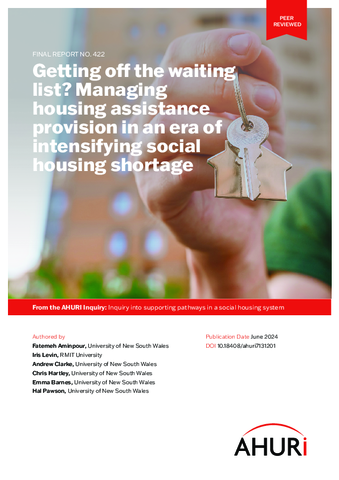This research investigates how policy makers and housing providers can use other forms of housing assistance to support people who are otherwise eligible for social housing.
In 2021-22, across Australia over 174,600 households had applied to live in social housing but only 29,100 households—usually those with complex or acute needs—were offered a home. The shortage of new social housing lettings means many applicants have no guarantee of when they will be housed. As a result, assisted access to private rental tenancies has become increasingly central to housing assistance programs.
Private rental assistance is typically targeted at applicants whose needs are less acute. However, there is a question whether these forms of assistance are effective.
Most private rental assistance products have affordability cut-offs such that applicants can only receive support if the rent for the property they are applying for is less than 50–55 per cent of their income. Because rents are too high for the eligibility requirements. private rental assistance recipients are finding it increasingly difficult to secure private rental properties that conform to the affordability cut-offs.
The research identified a range of opportunities to improve current processes for managing private rental assistance for social housing applicants, including making sure the application process and the housing assistance system is clear and accessible, and developing individual plans for clients to enable them to access other services that are available to them, including private rental assistance.

